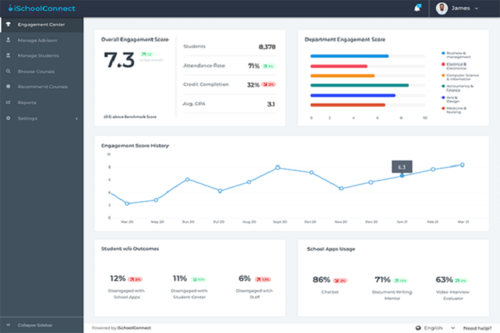The COVID-19 pandemic created unprecedented challenges for global higher education, affecting everything from student recruitment to classroom delivery. The crisis disrupted every element of higher education, complicating the study abroad process for international aspirants. However, despite the challenges, Indian students have continued to pursue education abroad in large numbers.
According to the Indian Bureau of Immigration, the top ten study-abroad destinations for Indians over the last five years were the United States, Canada, the United Kingdom, Australia, Germany, Russia, Bangladesh, Kyrgyzstan, Ukraine, and Singapore. With the number of Indian students studying abroad estimated at 15 lakh, these countries consistently attracted a significant influx of students, making them key players in international education.

COVID-19 undoubtedly posed a significant challenge for many Indian students aspiring to study abroad, but it couldn’t entirely dampen their aspirations. Despite the pandemic, the number of Indian students pursuing higher education abroad has continued to grow. According to the Ministry of External Affairs, the total number of students from India pursuing graduate and post-graduate studies in foreign countries reached 1.3 million (13 lakh) in 2024. This figure highlights the resilience of students determined to pursue their dreams, even in the face of adversity. Their determination can only be supported if foreign institutions provide the necessary resources and guidance.
Thus, it becomes imperative for higher education institutions to help aspiring students steer through the process and adapt to the new normal education model from start to finish. For this, a thorough understanding of the evolving needs of the students and investment In technology is a must.
The changing needs of Indian study abroad aspirants
Most major global institutions are attempting to tap into the enormous talent pool of Indian students. The rising cult of the Made-in-India CEO with a foreign degree is causing the rest of the globe to turn east and consider India as a potential talent acquisition destination. The recent appointment of Parag Agarwal as the CEO of Twitter Inc., who joins a long list of stalwarts in the IT and non-tech sectors, has highlighted the importance of onboarding more Indian students.
According to a new report by QS Quacquarelli Symonds (QS), which surveyed over 110,000 prospective international students, Indian students identified key factors that influence their decision to study abroad. The most significant consideration for 74% of Indian aspirants is the cost of living, followed closely by concerns about securing a job (60%) and the availability of scholarships (60%).
The survey laid key insights on what drives Indian students’ higher-ed decisions. Return on investment and graduate employability emerged as the top factors when considering studying abroad. Additionally, a welcoming environment and support services, especially financial, were other key factors. For both long and short–term success in enrolling Indian students, a strategy that considers their particular tastes and requirements should be the key focus for universities. Leveraging digital marketing and AI-based technology to connect with and recruit this unique demographic will be pivotal.
How to optimize your enrollment strategies
While recruitment and marketing are pivotal to higher education institutions, pioneering them in unique demographics like India requires a thorough understanding of the niche requirements and expectations of the country’s study abroad aspirants. To accomplish this, universities need to scout for organizations studying these patterns and expectations. The focus should be on ed-tech firms that can connect deserving students to top universities in the initial stages at scale. AI-enabled platforms that act as a reservoir of information, filling in all the information pits with regards to the concerned university and enabling students to successfully apply to the university will be a win-win for both the university as well as the students. This collaboration will not only help students experience a smooth application process but also enhance the long-term relationship between the institution and the student.
Organizations can provide universities with rigorous market research, content development, design, and analytics services. Moreover, they can help universities reach out to potential students. A survey conducted by EDMO revealed that 71% of study abroad aspirants find recruitment agents helpful in the study abroad admissions process.
How can data analytics refine the enrollment process?
Data analytics is indubitably the future of sustainable higher education. Universities are harnessing the power of the data-crunching technologies to improve their recruitment and enrolment figures. With AI-enabled tools, universities have experienced a rise in recruitment and retention at a fraction of the cost. Predictive analytics is emerging to be an important part of universities gauging applicants, not just from the lens of enrollment but also admission from retention.
Enrollment strategies should be charted with broad timelines to not just aim for enrollment but completion of degrees. This should be stressed upon as statistics have it- Indian students want interaction with foreign students on campus. So, retention of students and completion of courses helps the university hype their graduates or on-campus students through testimonials, case studies, awards, etc., thus adding to the prospective student’s trust and enhancing the credibility of your institution’s brand. Institutions may particularly emphasise their Indian alumni network by collaborating with the relevant departments to give more success stories of inspiring Indian alumni.

Ed-tech companies are transforming the study abroad landscape and enabling universities across the globe to adapt to a more data-driven approach. The EDMO product suite is a unique AI-powered stack of tools that assist universities globally in streamlining their admissions process. A major highlight of the product suite is the Document Intelligence feature, which focuses on data compiling, processing applications, and providing real-time analytics.
This all-in-one platform is an end-to-end technological solution driven with human support. The diverse set of features of these tools enables universities to have wider outreach and visibility. Let us explore how:
In-country representation: EDMO in-country representatives visit schools and attend fairs on behalf of our partner institutions. This drill helps to nurture in-country partnerships with educational Institutions and promote your brand through in-campus workshops and events.

Enrollment Management: EDMO’s Document Intelligence helps universities process student applications more efficiently using AI. The features include:
- Data Compiling: Gather and organize all necessary student data.
- Document Reader: Extracts and processes relevant information from student documents.
- Student Compatibility: Assesses the compatibility of students with university programs.
- Rating and Scaling: Helps evaluate and rank applications based on set criteria.
- Real-Time Analytics: Provides valuable insights into application trends and data.
Additionally, Human Intelligence is integrated into the system through a dedicated success team, offering 24/7 support and guided tool training to ensure smooth operation and optimal use of the platform.

How is AI driving enrollment?
AI’s relevance in the higher education sector is continuously expanding owing to the preference shown by Millennials and Gen Z towards automated systems. Recruiting, admissions, remote learning, student achievement, and retention are all areas where AI technology is gaining traction in higher education. With regards to the recruitment and admissions process, tools like Virtual Interview Analyzers, Essay Graders, and AI-powered chatbots, are gaining momentum worldover.
Advanced chatbots are proving to be effective tools for providing information to applicants and streamline the complex process of enrolment. They help reduce the response time and thus help plug the lead management leak. According to data experts, the response time for leads must be 5 minutes or less. This may seem humanly impossible but can be achieved by leveraging AI-enabled chatbots.
AI chatbots have the ability to significantly boost enrolment and save money. Many prestigious universities across the globe have already integrated this tool into their admissions processes.
How to leverage SEO to boost enrollment
67% of study abroad aspirants use search engines to garner initial information on international institutions. During this initial stage of their search, 9 out of 10 students are undecided about the school they want to attend. Engaging students at this stage will help universities generate a greater number of applicants. A comprehensive SEO strategy including pushing content through blogs, social media, mobile-responsive web design, and keyword targeting can help your website appear more coherent and informative and get listed in the top search results.
Why is it important to power up your digital footprint?
Dynamic engagement strategies that evolve and cater to the changing needs of the demographic go a long way in increasing the visibility of the institution. The source and medium of information for students have significantly shifted to social media platforms and timelines are not just confined to friends and family updates but present news, research, and motivation as well.
Edtech and digital marketing businesses that operate within these demographics and use social media can assist the universities in establishing a strong digital presence. The local partner can assist in understanding the values and objectives of Indian students, which will aid in structuring the university’s enrolment strategy.
Why seek end-to-end technology solutions?
Boosting enrollment makes it critical to reflect pertinent data on the university website, as well as adapt to new technological advancements. Simultaneously, working and engaging with native ed-tech companies that use cutting-edge technology to bridge the gap between the institution and the student can up your game in the enrollment ring.








